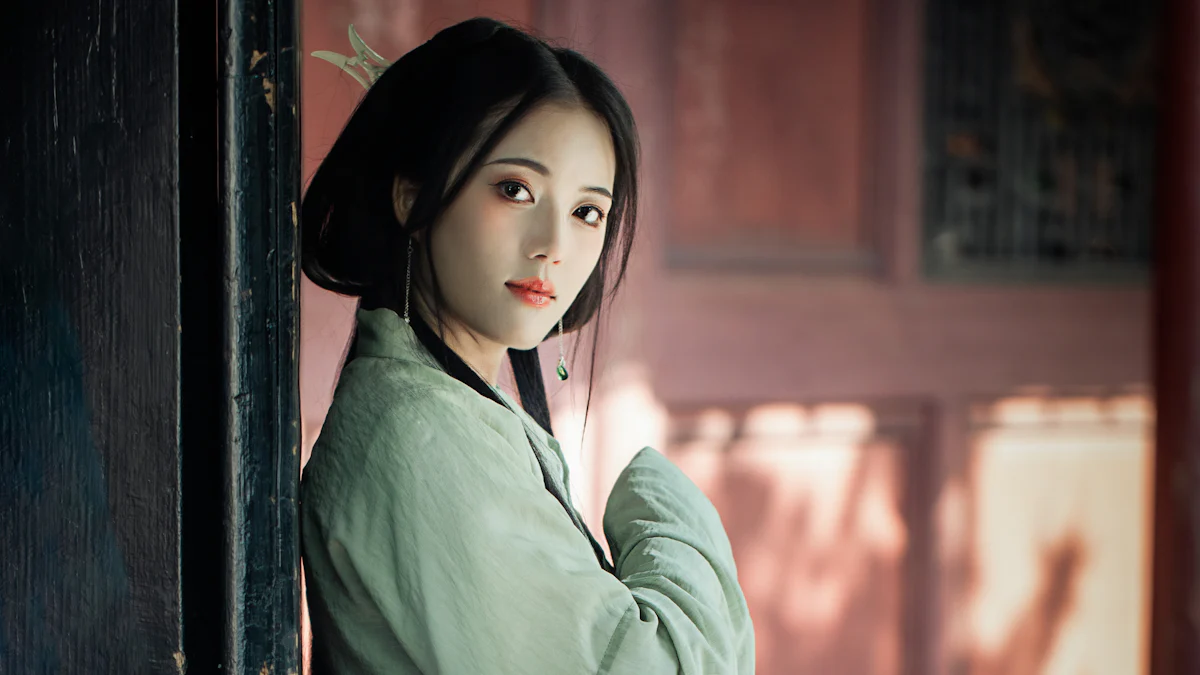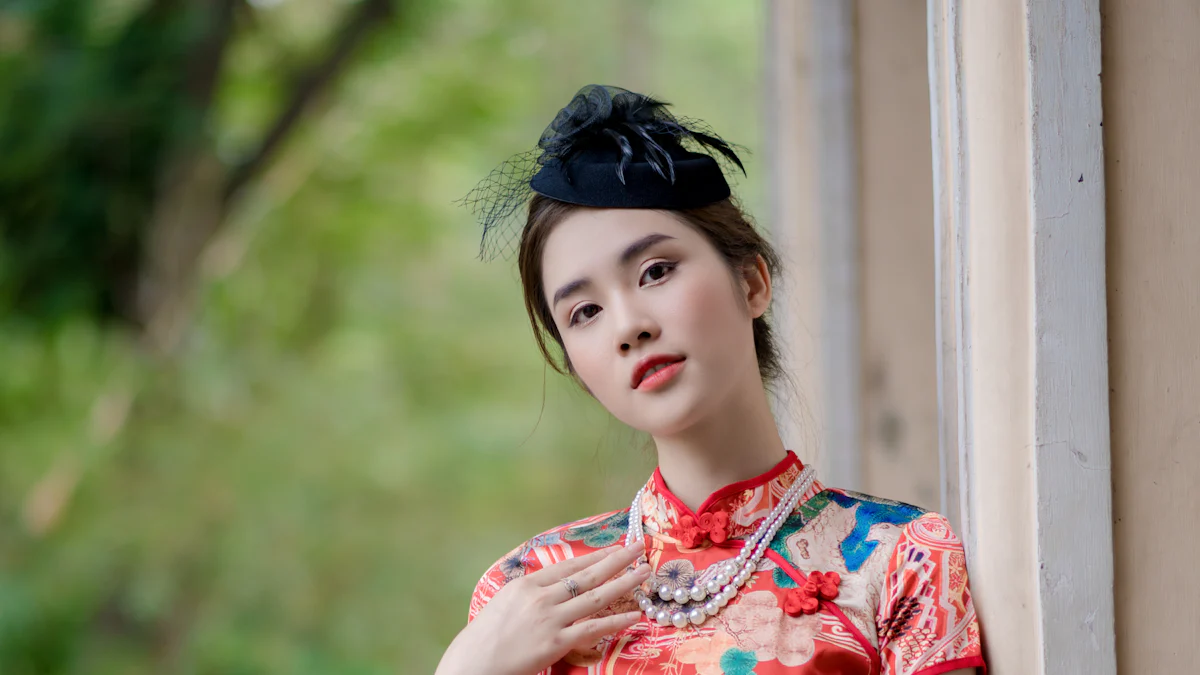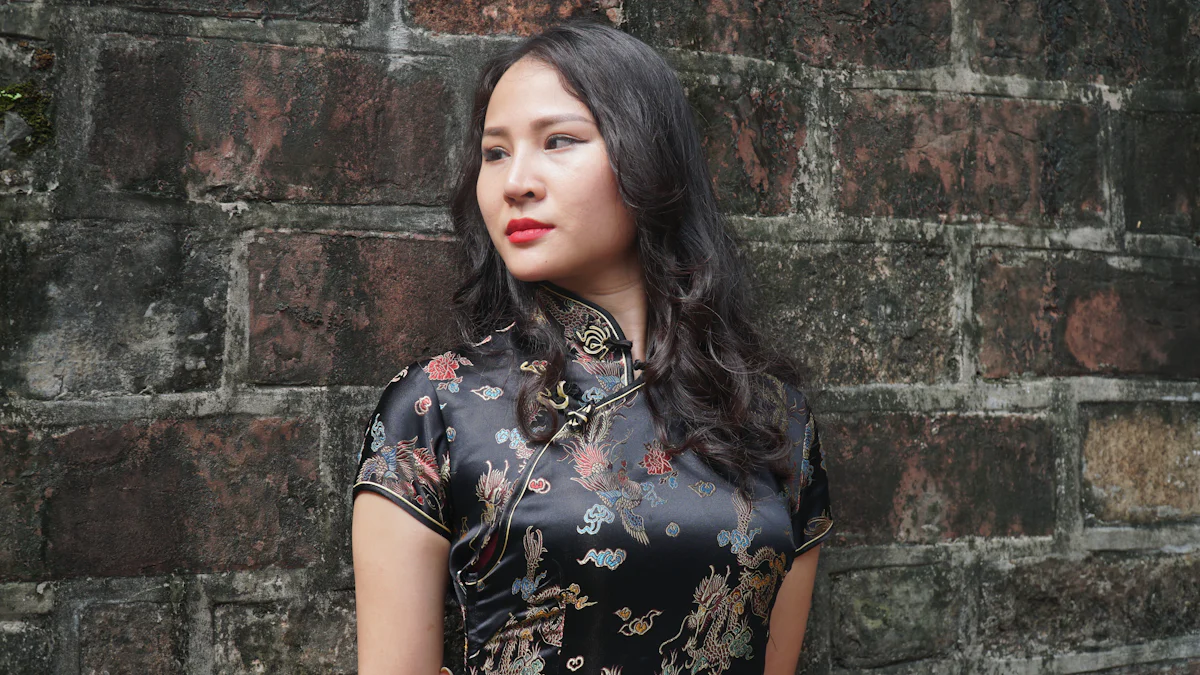
The silk cheongsam embodies a rich tapestry of history and culture, symbolizing elegance and grace in Chinese tradition. Its form-fitting silhouette, high neck, and side skirt slit have captivated fashion enthusiasts for decades. This blog delves into the origins and evolution of the iconic garment, tracing its journey through ancient China to modern-day runways.
The Origins of the Silk Cheongsam

In Ancient China, the silk cheongsam first emerged as a symbol of traditional elegance, adorning women in luxurious attire that exuded grace and sophistication. As time progressed and China transitioned to the modern era, the cheongsam evolved to reflect the changing societal landscape. It underwent a remarkable transformation, blending traditional craftsmanship with contemporary influences to create a garment that resonated with both tradition and modernity.
The silk cheongsam holds a profound cultural significance, symbolizing not just fashion but also embodying deeper meanings. It stands as a testament to the enduring elegance and grace of Chinese culture, encapsulating centuries of tradition in its form-fitting silhouette. Moreover, the cheongsam played a pivotal role in the women’s liberation movement in China, empowering women to embrace their identity and express themselves through fashion.
Throughout history, the silk cheongsam has been more than just a piece of clothing; it has been a cultural icon that reflects the evolution of Chinese society. From its ceremonial role in formal occasions to its popularity among affluent women in Shanghai during the 1930s, the cheongsam has left an indelible mark on Chinese fashion history. Its evolution through the decades mirrors the bold statements made by urban Chinese women in embracing modernity while honoring their heritage.
As feminist consciousness rose in the 1920s, Chinese women embraced the cheongsam, making significant improvements to its design and functionality. This shift marked a turning point in Chinese fashion, where tradition met innovation to create a garment that symbolized both cultural pride and progressive ideals.
Evolution Through the Ages
20th Century Changes
The silk cheongsam underwent significant transformations in the 20th century, adapting to the evolving fashion landscape and societal shifts. The design of the cheongsam evolved from loose-fitting, layered robes to a more fitted and streamlined silhouette that accentuated the femininity of urban Chinese women. During the 1930s and 1940s, the garment symbolized Chinese women’s newfound freedom and modern identity.
Influence of Western Fashion
Influenced by Western fashion trends, the silk cheongsam saw adaptations that blended traditional Chinese elements with modern styles. The original loose cut of the cheongsam gave way to a more form-fitting design, reflecting a fusion of Eastern and Western aesthetics. Women in metropolitan cities like Beijing and Shanghai embraced these changes, making the cheongsam a regular outfit that represented their progressive outlook.
Adaptations During the Republic Era
As feminist consciousness rose in the 1920s, Chinese women made significant improvements to the traditional male version of cheongsams, reclaiming it as a symbol of female empowerment. The garment evolved to cater to changing societal norms, becoming a versatile attire that bridged tradition with contemporary influences. The adaptations during this era marked a pivotal moment in Chinese fashion history, where cultural heritage met modern innovation.
Post-Revolution Developments
Following the Cultural Revolution’s impact on Chinese society, the cheongsam experienced a revival in contemporary fashion scenes. While no longer a mainstream attire choice, it continued to hold significance as a cultural emblem and symbol of heritage. In modern times, designers have reimagined the silk cheongsam, infusing it with new designs and materials while preserving its timeless elegance.
Cultural Revolution Impact
The Cultural Revolution brought about changes in clothing preferences among Chinese citizens, leading to shifts in fashion choices and styles. Traditional garments like the cheongsam faced challenges during this period but managed to endure as symbols of resilience and cultural pride. Despite facing adversity, the cheongsam persisted through history as an enduring representation of China’s rich sartorial heritage.
Revival in Contemporary Fashion
In contemporary fashion circles, there has been a resurgence of interest in reviving traditional garments like the silk cheongsam. Designers have incorporated elements from past eras into modern interpretations, creating unique pieces that pay homage to China’s fashion legacy. The revival of the cheongsam reflects a global appreciation for cultural diversity and craftsmanship while celebrating its enduring allure.
Modern-Day Significance

In the realm of contemporary fashion, the silk cheongsam continues to captivate audiences worldwide with its timeless allure and cultural significance. Designers have seamlessly blended traditional craftsmanship with modern aesthetics, giving rise to a new era of cheongsam styles that resonate with global trends.
Current Trends
- Embracing the spirit of innovation, designers are infusing the classic silk cheongsam with modern designs, creating a fusion of elegance and contemporary flair.
- The cheongsam’s versatility allows it to transition effortlessly from formal events to casual outings, making it a staple in many fashion-forward wardrobes.
Fusion with Modern Designs
- Incorporating elements like bold prints and unconventional fabrics into the traditional silhouette adds a touch of avant-garde sophistication to the silk cheongsam.
- By experimenting with asymmetrical cuts and intricate embellishments, designers are redefining the boundaries of traditional Chinese fashion while honoring its heritage.
Popularity in Global Fashion
- The global fashion scene has embraced the silk cheongsam as a symbol of cultural diversity and sartorial elegance.
- From runways in Paris to red carpets in Hollywood, the cheongsam has made its mark as a versatile garment that transcends borders and celebrates tradition in a modern context.
Symbol of Heritage
- Handmade craftsmanship lies at the heart of every silk cheongsam, showcasing meticulous attention to detail and preserving centuries-old techniques.
- Wearing a cheongsam is not just donning a garment but embracing a legacy of artistry and cultural pride that resonates with wearers around the globe.
Handmade Craftsmanship
- Each stitch on a silk cheongsam tells a story of skilled artisans who pour their expertise into creating garments that embody grace and sophistication.
- The dedication to preserving traditional techniques ensures that every cheongsam carries with it a piece of history, making it more than just clothing but an heirloom to be cherished.
Pride in Cultural Identity
- For many individuals, wearing a silk cheongsam is more than a fashion choice; it’s an expression of cultural identity and connection to Chinese heritage.
- The pride instilled by donning this iconic garment transcends mere aesthetics, fostering a sense of belonging and celebration of one’s roots.
Embarking on a journey through time and culture, the silk cheongsam narrates a captivating tale of elegance and tradition. From its origins in Ancient China to its modern-day adaptations, this iconic garment has stood as a symbol of grace and sophistication. As it continues to evolve with contemporary designs, the cheongsam remains a timeless piece that celebrates cultural heritage and craftsmanship. The future of the silk cheongsam shines brightly, bridging the past with the present in a seamless fusion of style and tradition.






